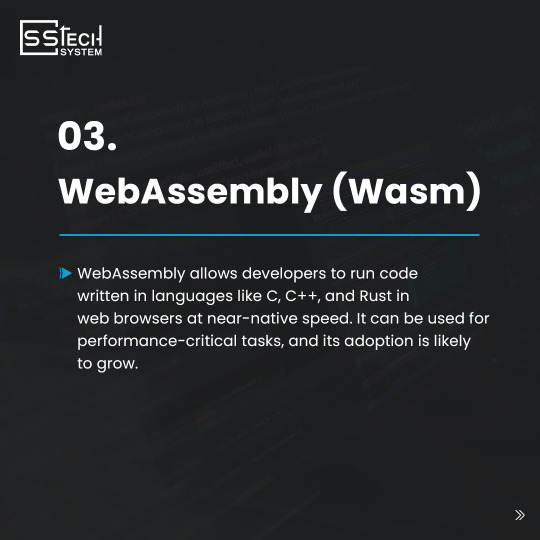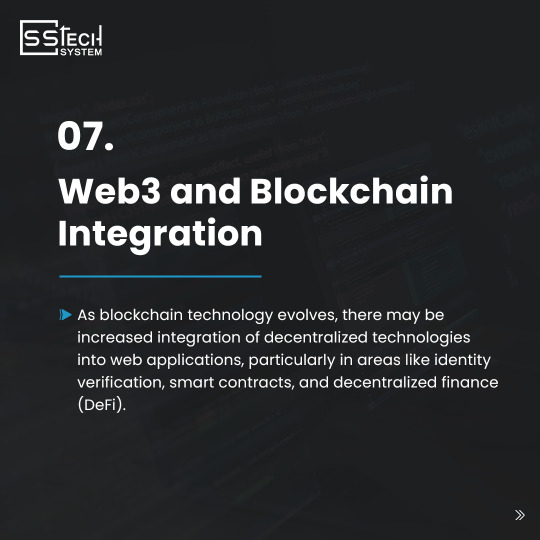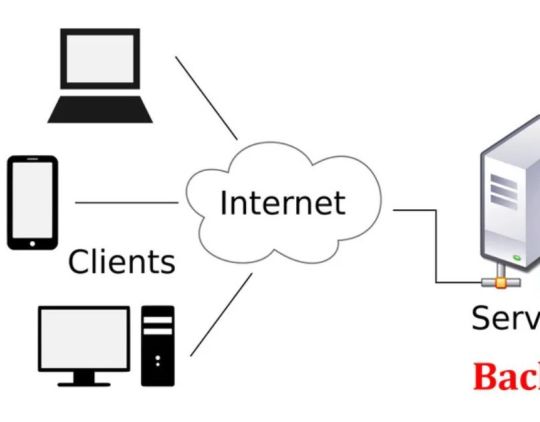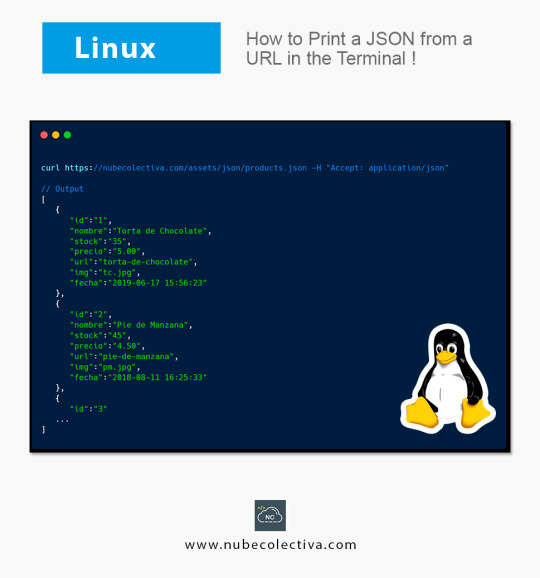#BackendDev
Explore tagged Tumblr posts
Text










Ready to level up your back-end & web development skills?
Check out these emerging trends you need to know.
𝗙𝗼𝗿 𝗠𝗼𝗿𝗲 𝗜𝗻𝗳𝗼𝗿𝗺𝗮𝘁𝗶𝗼𝗻: Custom Software Development Company
#sstechsystem#webdevelopment#backenddeveloper#backend#developer#softwareengineering#innovation#futureoftech#coding#trends#webdev#backenddev#techupdates#programming#softwaredevelopment#teamwork#skillup#webtechnologies#developertools#webdesign#backenddevelopment#webdevtrends#futureoftechnology
3 notes
·
View notes
Text
Zen of Python
A filosofia que torna o Python tão especial!
Quando falamos sobre linguagens de programação, normalmente pensamos em sintaxe, performance e recursos técnicos. Mas o Python vai além. Ele carrega uma filosofia por trás de seu design — um conjunto de princípios chamado Zen of Python, escrito por Tim Peters, que resume a essência do que é escrever um código Pythonic: simples, legível e elegante.
O Zen é composto por 19 frases curtas que funcionam quase como “mandamentos” para quem quer escrever código claro, eficiente e sustentável. Ele não dita regras rígidas, mas sim uma mentalidade que valoriza a legibilidade, a simplicidade e o bom senso. E isso é o que torna Python tão amado por desenvolvedores iniciantes e experientes.
Um dos princípios mais famosos diz: “Beautiful is better than ugly” (“Belo é melhor do que feio”). Pode parecer subjetivo, mas essa frase nos lembra que escrever código limpo, bem estruturado e fácil de entender é mais importante do que apenas fazê-lo funcionar. Um código bonito é mais fácil de manter, de escalar e de colaborar em equipe.
Outro princípio essencial é “Simple is better than complex” (“Simples é melhor do que complexo”). Essa ideia reforça o valor de soluções diretas e claras, evitando abstrações desnecessárias que tornam o código confuso e difícil de debugar. E se você pensar bem, esse é um dos motivos pelos quais o Python tem uma curva de aprendizado tão suave.
Há também frases como “Readability counts” (“A legibilidade conta”) e “Explicit is better than implicit” (“Explícito é melhor do que implícito”), que reforçam a importância de escrever código que qualquer outra pessoa — ou você mesmo no futuro — possa entender com facilidade. Afinal, código é lido muitas vezes mais do que é escrito.
Apesar de não ser uma documentação oficial ou um guia de estilo obrigatório, o Zen of Python se tornou parte da cultura da linguagem. Tanto que você pode acessá-lo diretamente no terminal Python com o comando import this. Ele serve como um lembrete sutil de que boas práticas não são apenas sobre performance, mas sobre clareza e propósito.
Em um mundo onde a complexidade está por toda parte, o Zen of Python nos lembra que escrever código pode ser uma forma de arte — e que beleza, simplicidade e clareza são escolhas que impactam diretamente na qualidade do que construímos. Para quem desenvolve com Python, entender essa filosofia é tão importante quanto dominar a linguagem em si.
#ZenOfPython#PythonBrasil#ProgramaçãoPython#CódigoLimpo#CleanCode#DevMindset#TechContent#MulheresNaTecnologia#Programadora#BackEndDev#PythonTips
0 notes
Text
Backend là gì? Phần phía sau vận hành mọi chức năng của một website hay ứng dụng
Backend là phần phía sau giao diện người dùng, chịu trách nhiệm xử lý logic, lưu trữ dữ liệu, bảo mật và kết nối với cơ sở dữ liệu. Đây là "bộ não" điều khiển hoạt động của website hoặc ứng dụng, giúp mọi thao tác như đăng nhập, thanh toán hay tìm kiếm diễn ra mượt mà và an toàn.
Đọc chi tiết: Backend là gì?

0 notes
Text
Essential Testing Strategies for MERN stack Developers in 2025
Reference :
Introduction

MERN stack testing is very important for making sure that apps run well and don't have any bugs. MongoDB, Express.js, React, and Node.js are all part of the MERN stack, which is used to make full-stack JavaScript apps. Startups and businesses like it because it is flexible, works with JavaScript, and can be developed quickly.
As web apps get more dynamic and data-driven, they need to be tested thoroughly every time. From API logic and database operations to UI workflows and real-time interactions, developers need to check every part of their application.
This blog will look at different levels of MERN stack testing strategies. You will learn the best ways to use tools, integrate them, and use them in real life to help MERN stack developers ship faster and smarter.
Why Testing Is Important in the MERN stack?
There are a lot of moving parts in modern JavaScript apps, but the MERN stack brings them all together. A bug in one part of the stack can affect the whole thing, from rendering the UI in React to handling the backend logic in Node.js and Express to storing data in MongoDB. Testing makes sure that every feature works as it should and keeps working that way after each update.
Testing in MERN stack Projects has many benefits, such as:
Makes code better and helps find logical mistakes early
Stops regressions when adding new features or fixing bugs
Catches UI or functional problems before deployment, which improves the overall user experience.
Gives developers more confidence to make changes quickly and safely
In agile environments where developers push code often, testing is very important. It works well with CI/CD workflows by checking builds and finding bugs early in the deployment process. Thorough test coverage makes onboarding easier for teams by making it clear how the app is set up and how it should work.
Important Types of Tests for MERN Stack Apps

Testing your app from different angles makes sure it works perfectly. Unit, integration, and end-to-end testing are the three main types of testing that help the MERN stack.
Testing Units
Unit tests check the smallest parts of your app on their own. This could be a React component, a utility function, or just one Express route handler.
Suggested Tools:
Jest: Great for unit testing on both the front end and the back end
Mocha and Chai are lightweight tools that work well for backend services.
When you write unit tests:
Pay attention to the input and output that you can predict.
Use libraries like Sinon to mock dependencies to avoid side effects.
Make tests quick and modular.
For example, try out a product price calculator or a user role validation function with different sets of input.
Testing for Integration
Integration tests check that components can work together. This could be the link between Express routes and MongoDB, or how a React form sends data to the backend and gets a response back.
Tools that are recommended:
Supertest: To test middleware logic and simulate API requests
Chai: For clear, concise statements
Jest: Used with a test environment set up to create database mocks or test DBs
Integration testing helps find problems between layers that unit tests might not find. Always include situations like:
Logging in a user and getting their profile information
Filling out a form and saving the information to MongoDB
Uploading files or doing things that take more than one step
Testing from Start to Finish (E2E)
End-to-end testing makes the frontend and backend work together like real users do. It makes sure that the whole application works as it should in real life.
Tools that are recommended:
Cypress is fast, easy to use, and has a lot of debugging tools.
Selenium: Still strong, especially for testing across browsers
Puppeteer: The best way to test a headless browser in Chrome
For example:
Signing up a new user, logging in, changing a profile, and logging out
Putting things in a cart and going through the checkout process
Checking that the UI works on all screen sizes
By mimicking full workflows, E2E testing makes you more sure that something is ready for production.
Best Practices for MERN Stack Testing
You need more than just tools to keep your codebase in good shape. You need rules that apply to all parts and features!
Best Practices That Work:
Make small, separate parts of your app that are easy to test on their own.
Use builders or factories to make fake data on the fly.
Don't share state between tests; reset environments before each run.
Make sure that test cases reflect how things are really used and cover CRUD operations.
When setting up SSR for React, use strategies that know about hydration.
Make sure the output is meaningful, not just matches on the surface.
Write down each test case in your codebase or test suite. Patterns that are clean and reusable help make sure that quality is the same across teams!
Testing for Performance and Load
Performance testing sees how well your MERN stack can handle a lot of work over time. It looks at how your system works when it's under stress, when there's a lot of traffic, or when there are a lot of complicated data sets.
Main Areas of Focus:
MongoDB: Keep an eye on slow queries, aggregation stages, and indexes that are missing
Node.js and Express: Keep an eye on API latency when multiple requests are made at the same time.
React: Check for bottlenecks in rendering time, memory use, and the lifecycle of components
Suggested Tools:
Lighthouse checks the performance of the front end and the web vitals.
Artillery: Load testing for APIs with scenarios that you can change
Apache JMeter: Old support for heavy test scripts and multiple protocols
As part of staging deployments, performance tests should be run regularly. Use monitoring tools like New Relic, Datadog, or Prometheus to keep an eye on performance drops.
Putting a Testing Workflow into Place
Testing workflows make sure that your codebase stays stable while you add new features and deploy them.
How to Add Testing to Agile Environments?
Use test-driven development (TDD) or behavior-driven development (BDD) models to write tests.
Set up Git hooks to run unit tests automatically before you push or merge code.
Use GitHub Actions, GitLab CI, or CircleCI to add Jest, Mocha, or Cypress to your CI/CD pipeline.
Use Istanbul, Coveralls, or Codecov to keep track of coverage and make sure all logic paths are tested.
An example of a GitHub Actions workflow is:
yaml
jobs:
test:
runs-on: ubuntu-latest
steps:
- uses: actions/checkout@v3
- name: Install dependencies
run: npm install
- name: Run tests
run: npm run test
Common Mistakes and How to Stay Away from Them?

Avoiding mistakes saves a lot of time spent debugging. These problems can often make tests less accurate or less effective.
Mistake 1: Not paying attention to async operations
When tests don't wait for promises to resolve, async bugs go unnoticed.
To fix this, use async/await in your test cases. Mock asynchronous services like HTTP calls or database access the right way!
Mistake 2: Not checking for errors
A lot of developers only write tests for paths that work!
Fix: Add test cases for inputs that aren't valid, tokens that have expired, or permissions that have been denied. Fix mistakes on both the front end and the back end.
Mistake 3: Not covering all aspects of integration
Testing units on their own without checking the whole flow gives you false confidence. To fix this, write tests that cover the whole workflow. Include calls to routes, logic for controllers, and interactions with the database.
Mistake 4: Test Data That Doesn't Change
Hardcoded data might pass tests without showing how things really work.
Use random or dynamic data generators to fix the problem. Make seed functions that can be used again and again in test environments!
MERN Stack Testing Tools and Frameworks
Your tests will be fast, reliable, and easy to maintain if you choose the right tools. The MERN stack has four layers: frontend, backend, database, and integration points. You need a set of tools that work with each one!
Let's look at the best ones by type!

Tools for Testing the Frontend:
Jest is quick and adaptable, and it can do both mocking and snapshot testing. Great for testing units and putting them together.
React Testing Library: Tests should be based on how users use the app, not how it was built.
Cypress is the best tool for end-to-end testing. It lets you travel through time, wait automatically, and have a great experience as a developer.
Lighthouse checks performance, accessibility, SEO, and more in real time.
Tools for Testing the Backend:
Mocha and Chai are a lightweight pair with strong BDD syntax and assertion handling.
Supertest: Test RESTful APIs made with Express and pretend to make requests and get responses.
Artillery: Tests HTTP, WebSocket, and more. Allows for scripting and data seeding.
JMeter is great for old systems or apps that use more than one protocol.
Full-stack and Useful Tools:
Puppeteer is a headless browser that you can use to test user interfaces and take screenshots.
K6: A performance testing tool that is easy for developers to use and focuses on API-level benchmarks.
Postman Performance Testing: Now can script tests and test load.
Istanbul (NYC): A tool for checking code coverage that is often used with Jest.
Coveralls and Codecov work with CI to show and keep track of test coverage over time.
All of these tools support agile practices, work well with CI/CD pipelines, and help make tests more accurate across the MERN stack. Choose tools that fit the way your team works, the size, and complexity of the application.
Bottomline
Testing that works keeps your MERN stack together, from managing state in React to handling backend logic in Node.js and working with databases in MongoDB. It makes sure that your app works the same way all the time, even when there are updates, spikes in traffic, or new features are added.
Teams that use full-stack testing get more than just code that doesn't have any bugs. They make user journeys smoother, release new features faster, and keep things stable over time. Developers stop regression and make sure that their code works the way it should in the real world by doing unit, integration, and end-to-end testing.
MERN stack development is more scalable, maintainable, and ready for production when it is thoroughly tested. When developers put automated testing first, they avoid technical debt and can build with confidence.
Don't think of testing as something you do after you release your MERN app. For every project that uses modern MERN state management, a reliable testing suite makes sure that the code is clean, the results are predictable, and the deployment pipelines are trustworthy. You can always consult with an expert from any software product engineering service!
#MERNStack#JavaScriptTesting#FullStackDev#ReactJS#NodeJS#Cypress#Jest#WebDev#SoftwareTesting#DevTips#BackendDev#FrontendDev
0 notes
Text
Get experienced Python developer for web apps, APIs, AI, or automation. I expert use Django, Flask, and cloud tech to build secure and scalable solutions. Flexible hiring models to fit your needs. Start building with Python today!
#Hire Python Developer#Django#BackendDev#Machine Learning#Automation#Cloud Development#webapps#Python Programming#Remote Developer#Full Stack Python#Tech Solutions#Software Developer
0 notes
Text
Golang (Go) – Ngôn ngữ lập trình tối ưu cho hiệu suất và quy mô!
🚀 Bạn đang tìm kiếm một ngôn ngữ lập trình đơn giản nhưng mạnh mẽ để phát triển hệ thống hiệu suất cao? Golang (hay Go) – do Google phát triển – đang trở thành lựa chọn hàng đầu cho các backend developer, đặc biệt trong lĩnh vực microservices, cloud, DevOps.
✨ Ưu điểm nổi bật:
🔗Cú pháp gọn gàng, dễ đọc
🔗Xử lý đồng thời (concurrency) mạnh mẽ
🔗Biên dịch nhanh, chạy cực nhẹ
🔗Được sử dụng bởi các "ông lớn" như Google, Uber, Dropbox, Docker…
💡 Nếu bạn muốn tăng tốc sự nghiệp lập trình với một công cụ hiện đại, Go là lựa chọn đáng cân nhắc trong năm 2025!
👉 Khám phá chi tiết về Golang tại: https://interdata.vn/blog/golang-la-gi/

0 notes
Text
Core Java & Full Stack Java

👨💻 Want to learn Java the right way? Join our Core Java & Full Stack Java course by Mr. Venkatesh Mansani 📅 26th June | 🕚 11:00 AM IST 🔗 https://tr.ee/QQXTtY
0 notes
Text
🔐 How to Build Secure Python APIs with Django & FastAPI (2025 Edition)

So, you’re building a backend with Python? Awesome. But here’s the thing—if your APIs aren’t secure, they’re a liability. And in 2025, security isn’t optional, it’s expected.
Let’s break down how to keep your Python APIs secure using two of the most popular frameworks out there: Django and FastAPI.
⚔️ Django vs FastAPI – Which One Should You Choose?
FrameworkBest ForDjango RESTFull-featured projects, complex permissions, admin toolsFastAPIFast, async microservices, developer flexibility
Django REST is your go-to for complex apps with built-in security. FastAPI gives you speed, but you'll need to manually set up more layers.
🛡️ Must-Have Security Layers (Regardless of Framework)
✅ Token-based authentication (JWT or OAuth2)
✅ Role-based permissions
✅ Throttling & rate limits
✅ Input validation
✅ HTTPS all the way
✅ No hardcoded secrets, ever
🔧 Securing APIs with Django REST Framework
🎯 What to use:
IsAuthenticated, IsAdminUser, or custom permission classes
Throttling with DRF settings: pythonCopyEdit'DEFAULT_THROTTLE_RATES': { 'user': '100/hour' }
CSRF and CORS middleware
Token or JWT auth (try SimpleJWT)
⚡ FastAPI Security Tricks
Use OAuth2PasswordBearer for login workflows
Dependency injection for user checks
Rate limiting via slowapi
Use Pydantic for request validation (like a boss)
pythonCopy
Edit
from fastapi import Depends from fastapi.security import OAuth2PasswordBearer oauth2_scheme = OAuth2PasswordBearer(tokenUrl="token")
🧨 Real-World Use Case: SSL Automation with Python
We built a microservice that monitors SSL expiry across 100+ domains. Here’s what it used:
FastAPI for the async API layer
Docker + PostgreSQL
Alerts via email + webhook
Protected webhooks using hashed secrets
Input filtering to avoid bad domains
👉 Want to see how we do Python professionally? Here’s our Python Development Services.
🔁 Your 2025 Secure API Checklist
Use token-based auth (OAuth2 or JWT)
Set permissions for every route
Don’t forget CORS & CSRF rules
Add rate limits to prevent abuse
Validate everything on the backend
Rotate tokens and monitor usage
Encrypt data at rest + in transit
🧠 TL;DR
If you’re building APIs in Python, make security a first-class citizen. Django gives you guardrails. FastAPI gives you speed. Both can be secure—if you build it right.
Have questions? Building something cool with Python? 🎯 Drop me a message or comment below.
0 notes
Text
Speed up your website in seconds with a CDN! 🚀 Faster load times = better UX, higher SEO, and happy users.
#CDN#WebsiteSpeed#WebPerformance#SpeedOptimization#PageSpeed#WebDevTips#TechHack#FastWebsite#LoadFaster#UXDesign#SEO#WebDevelopment#FrontendDev#BackendDev#SpeedHack#WebsiteOptimization
0 notes
Text
Got APIs to integrate? We love that stuff.
0 notes
Text
Your Guide to Java Web Application Frameworks in 2025
From Spring Boot to JSF, the world of Java web application frameworks is evolving fast. Whether you're building a REST API or a scalable enterprise app, picking the right tech stack can make or break your project. 💻✨
✅ Compare the top Java frameworks ✅ Learn their pros, cons, and best use-cases ✅ Future-proof your development strategy
🔗 Dive into the details:
https://www.creolestudios.com/java-web-application-frameworks/?utm_source=tumblr&utm_medium=bookmarking&utm_campaign=web-app-purvi
0 notes
Text
Frontend. Backend. Database. API. DevOps. Ever wonder how top tech companies manage it all so seamlessly?
The secret: Full Stack Development. It’s not just a skillset — it’s a strategy.
One aligned vision.
One unified workflow.
One agile team from idea to deployment.
At Prishusoft, we build powerful, end-to-end solutions — fast, scalable, and perfectly in sync. Whether you're launching an MVP or scaling your ecosystem, our full stack approach keeps your product lean, flexible, and future-ready.
Curious how full stack development can change the game for your business? Here’s a behind-the-scenes look https://www.prishusoft.com/full-stack-development

0 notes
Text
💥 Yeni Yüzüyle P65.Net Yayında! 💻
Yepyeni tasarımıyla p65.net artık daha hızlı, daha sade, daha kullanışlı! 🚀 Webmaster araçları 🧠 SEO analizleri 🛠️ Kod paylaşımları 🎮 Oyun rehberleri Ve çok daha fazlası seni bekliyor! Göz atmadan geçme 👉
#Webmaster#SEOTools#Kodlama#WebGeliştirme#HTML#CSS#JavaScript#WordPress#MyBB#WebTasarım#SunucuYönetimi#LiteSpeed#cPanel#CloudLinux#SEOAnalizi#Yazılım#p65net#SysAdmin#LinuxServer#PHPDevelopers#FrontEndDev#BackEndDev#FullStackDeveloper#WebTools#WHM#SiteOptimizasyonu#PerformansAnalizi#TürkWebmaster#SEOAnaliz#KodPaylaşımı
0 notes
Text
How to Print a JSON from a URL in the Linux Terminal !
Como Imprimir un JSON desde una URL en la Terminal de Linux !

#software development#web development#100daysofcode#developerlife#web developers#developers#devs#worldcode#developers & startups#backenddevelopment#backenddev#frontendev#json#linux
0 notes
Text
Mastering Node.js: Essential Tips and Techniques

Mastering Node.js: Unlocking the Power of Backend Development! Delve into the world of Node.js and elevate your skills with the LSET comprehensive guide. Whether a novice or an experienced developer, LSET expert-led course provides essential tips and techniques to help you build scalable and efficient backend applications. Plus, with the London School of Emerging Technology (LSET)Node JS Course, you'll receive hands-on training and personalised mentorship, ensuring you're well-equipped to thrive in the dynamic field of backend development. Join us and become a proficient Node.js developer ready to tackle real-world challenges with confidence!"
Enrol @ https://lset.uk/ for admission.
0 notes
Text

Dive into React and start from scratch! 🌟 Master the latest web Technologies and gain a competitive edge in the JobMarket. 👨💻
Our expert tutors are here to guide you in building dynamic, rich web apps with React, the most in-demand framework. 🚀 According to a Statista study, 40% of software engineers globally use React for web application development.
Don’t miss out this oppurunity, start learning today! 📚💡 #WebDevelopment#learnreact
For Additional Info🔔 🟢Whatsapp: https://wa.me/9677781155 , https://wa.me/7558184348 , https://wa.me/9677724437 📨Drop: https://m.me/elysiumacademy.org 🌐Our website: https://elysiumacademy.org/reactjs-training/ 📌Live Visit: shorturl.at/tMO45 🔖Appointment: https://elysiumacademy.org/appointment-booking/
#elysiumacademy#no1trainingacademy#elysiumacademy_madurai#no1academy#network#technology#training#informationtechnology#React#fullstackdeveloper#fullstackdev#fullstackjobs#frontend#BackEndDev#frontenddevelopment#reactcourse#fullstackwebdevelopment
0 notes